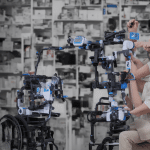As a car owner, you invariably seek ways to enhance your vehicle’s performance. One method you might consider is upgrading the throttle body. This crucial part of your car’s engine controls the airflow to the motor, thus directly affecting power output. This article will delve into the role of the throttle body and explore how an upgrade can improve airflow and enhance the engine’s performance.
Understanding the Role of a Throttle Body in Your Car
At the heart of every engine, you’ll find the throttle body – a butterfly valve located between the air intake filter and the intake manifold. It dictates the amount of air that enters the engine, thereby controlling the power output and fuel efficiency.
Sujet a lire : What’s the Best Approach to Customizing Your Car’s Suspension for Rally Racing?
Upon pressing the accelerator pedal, the throttle body opens, allowing air to enter your car’s engine. This air then mixes with the fuel to create a combustion that powers your vehicle. The more you press the accelerator, the wider the throttle body opens, increasing the amount of air and, consequently, the fuel getting into the engine. This action generates more power, energizing your car’s performance.
How Upgrading the Throttle Body Can Improve Airflow
A standard throttle body is typically designed to meet the average driver’s needs. However, if you’re an enthusiast looking for higher performance, you might find your vehicle’s existing throttle body insufficient.
A lire également : Can the Use of a Carbon Fiber Driveshaft Offer Benefits in Terms of Weight Reduction and Strength?
An upgraded or larger throttle body will provide your car’s engine with more air, thereby increasing the power and performance. With a larger throttle body, the engine can take in more air at once, which results in improved throttle response. This feature also benefits fuel efficiency, as the engine can create more power with less effort.
Additionally, an upgraded throttle body is designed to provide smoother, more reliable airflow. It removes restrictions often present in stock throttle bodies, which can cause turbulence that restricts the free flow of air.
The Link Between Throttle Body Size and Engine Performance
The size of your throttle body can dramatically impact your engine’s performance. A larger throttle body will increase the maximum airflow rate to the engine, leading to increased power output.
When you upgrade to a larger throttle body, you’ll experience an immediate improvement in throttle response. This change is primarily because the larger body allows more air to flow into the engine at any given moment, increasing power and performance.
However, it’s essential to note that while a larger throttle body allows for more air, it doesn’t automatically mean your engine can use all that air efficiently. The engine’s intake system must be configured to handle the additional airflow. If it can’t, you may see little to no improvement in performance, despite the bigger throttle body.
Choosing the Right Throttle Body Upgrade
Choosing the right throttle body for your car requires careful consideration. You should start by determining your performance goals and understanding what your engine can handle. If your vehicle has a stock engine, a mildly larger throttle body can offer a noticeable improvement in throttle response and horsepower. However, if you have a modified engine, you may require a substantially larger throttle body to achieve the desired performance.
When making a choice, remember that a throttle body that’s too large can cause as many problems as one that’s too small. A massively oversized throttle body can disrupt the air/fuel ratio, causing poor fuel economy and reduced performance.
Lastly, you’ll want to ensure that the throttle body you choose is compatible with your vehicle’s make and model. Not all throttle bodies are universal, so you’ll need to find one that fits your specific car. If you’re unsure, seek professional advice.
The Impact on Fuel Efficiency
While enhancing engine performance, you also need to consider fuel efficiency. A larger throttle body will indeed allow more air into the engine, potentially increasing horsepower. However, if the engine cannot effectively utilize the increased airflow, the car’s fuel efficiency could decrease.
Moreover, driving habits can also impact your fuel efficiency. For example, consistently driving at high speeds with a wide-open throttle will consume more fuel. As such, while a throttle body upgrade can improve engine performance, it’s essential to balance it with responsible driving habits to maintain fuel efficiency.
In conclusion, a throttle body upgrade has the potential to improve both your vehicle’s airflow and engine performance. However, it’s critical that you carefully consider your vehicle’s capabilities, your performance goals, and the size of the upgrade to achieve the best results.
The Impact of a Response Controller on Performance
Beyond the throttle body, there’s another component of your vehicle that can significantly improve driving experience — the response controller. The response controller, also known as throttle controller, is an electronic device that connects to your throttle body and helps manipulate the signals sent to your vehicle’s ECU (Engine Control Unit).
These signals determine how fast the throttle body should open in relation to how much you’re pressing the accelerator pedal. So, if these signals are manipulated to indicate a higher pressing of the pedal than actually performed, your vehicle will react with a more rapid throttle response.
Therefore, the response controller can play a key role in enhancing your vehicle’s performance by delivering an improved throttle response. It eliminates the lag between the moment you press the accelerator and the time it takes for the engine to react. This reduced response time can be especially beneficial in situations involving overtaking or hill climbing.
However, it’s vital to ensure that your response controller is not setting an unrealistic expectation for your engine. An overly aggressive controller may lead to unnecessary strain on your engine and cause wear and tear. It may also lead to lowered fuel economy. Thus, selecting a controller with adjustable settings is advisable, as it allows you to switch among different modes depending on your driving conditions and requirements.
Air Intake and Mass Airflow Sensor’s Role in Engine Performance
Another significant component to consider when improving your engine performance is the air intake system and the mass airflow sensor. These two components, when working in unison with your throttle body, can maximize your engine’s power output.
The air intake system comprises the air filter and intake manifold, responsible for drawing in outside air and delivering it to your engine. A cold air intake system is an aftermarket option that draws in cooler air from outside the vehicle. Cooler air is denser and carries more oxygen, which can lead to increased combustion and, therefore, more power.
The mass airflow sensor, on the other hand, measures the amount of air entering the engine and relays this information to the ECU. The ECU then uses this data to calculate the appropriate amount of fuel needed for optimal combustion.
Upgrading to a higher quality air filter and a more efficient mass airflow sensor can deliver cleaner, more oxygen-rich air to your engine, consequently enhancing the engine’s performance.
Conclusion
Upgrading your vehicle’s throttle body can indeed lead to improved airflow and engine performance. However, the throttle body alone is not the sole determinant of your engine’s potential. To truly unlock the utmost performance, careful consideration of other components like the response controller, air intake system, and mass airflow sensor is crucial.
Remember, while power and performance are desirable, it’s equally important to consider your vehicle’s fuel economy. An aggressive performance throttle or an oversized throttle body might result in a decrease in fuel efficiency. Therefore, a balanced approach of upgrading and driving habits is essential to maintain a good fuel economy.
In a nutshell, a well-rounded knowledge of your vehicle’s fuel system is beneficial not just for upgradation but also for maintenance. Always consider your vehicle’s capabilities and your performance goals to get the most out of your upgrades.











